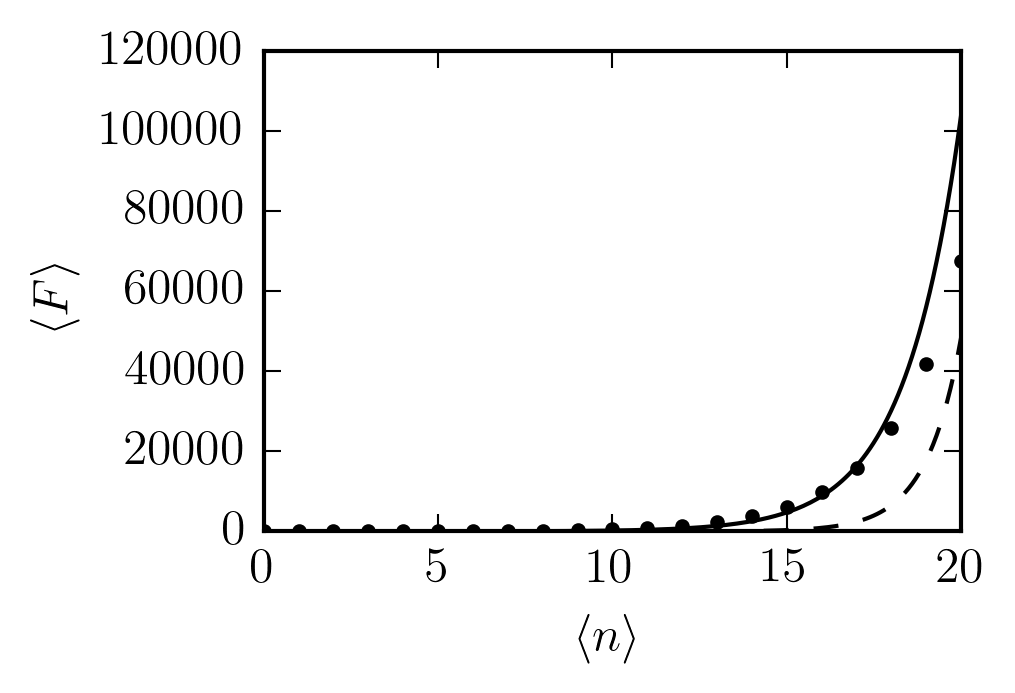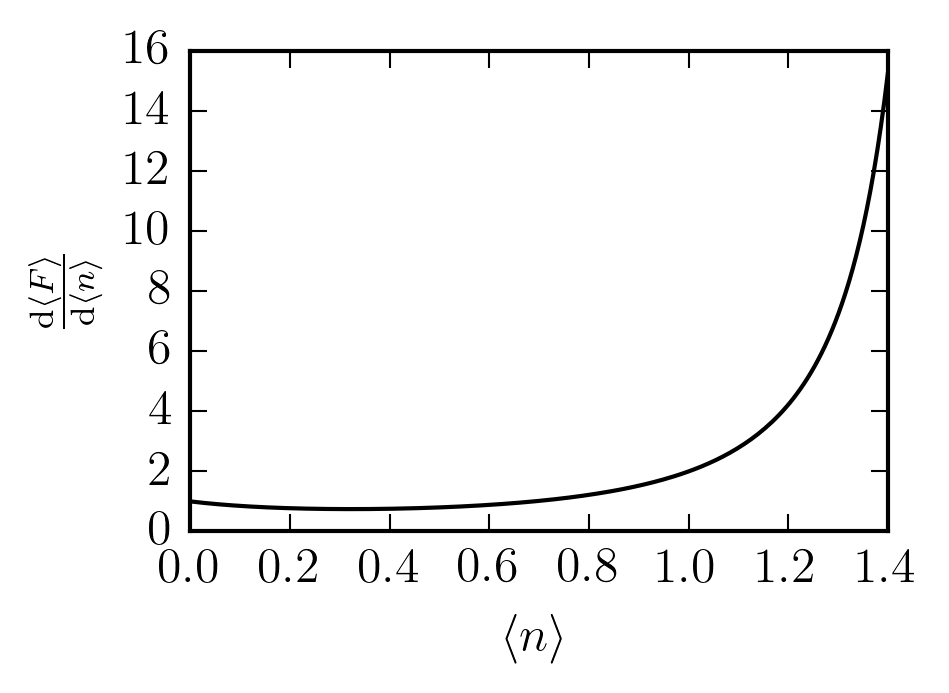Derivative of a sequence
2016-12-05My colleagues were recently discussing the idea of taking the derivative of a sequence. For example, consider the Fibonacci sequence What meaning can we assign to
My first instinct was that this is obviously a pointless exercise, since differentiation is inherently a limiting process. The best you could hope to do is a finite difference approach: but that's hardly interesting. It's also possible to make the sequence into a continuous function, whose derivative is then straightforward to calculate, but by doing so, I feel that you lose the nature of the sequence.
Chemical potential
It later occurred to me that I had seen something like this before. In thermodynamics, the chemical potential is defined as the change in internal energy with particle number: The number of particles is an integer, so this appears to be similar to the above quantity. In fact, I had previously been perplexed by the presence of an infinitesimal change in particle number.
My mistake was forgetting that all values in thermodynamics are averages, so in that expression is not necessarily an integer. It is the average number of particles, and may very well be a fractional quantity. The above expression is more explicitly written as where the average internal energy is and the average number of particles is I'm using to mean the probability of microstate to avoid all the business with writing out partition functions and Boltzmann factors.
We can apply this idea to taking the derivative of a sequence with respect to . Instead of the initial question, we ask about where and This requires us to have a probability distribution for the indices, so it's not a property of the sequence alone, but it is a concrete definition.
Fibonacci & Poisson
The simplest distribution with which to start is the Poisson distribution, with one parameter and pmf
This immediately gives us the simple expression
I don't know of anything as nice for , but we can calculate it numerically as a function of :
 For comparison,
is plotted with points and
is dashed.
The variance of the distribution grows as , so we expect the average value to contain contributions from higher and higher values of , and it's not surprising that increases much faster than .
For comparison,
is plotted with points and
is dashed.
The variance of the distribution grows as , so we expect the average value to contain contributions from higher and higher values of , and it's not surprising that increases much faster than .
What about the derivative?
Since
we find that
which looks like
 For comparison, we also have (dotted)
There's a degree of similarity, like what we might expect for an exponential function.
For comparison, we also have (dotted)
There's a degree of similarity, like what we might expect for an exponential function.
Fibonacci & geometric
The geometric distribution, with parameter and pmf
is quite different from the Poisson distribution, so let's see what effect this change has on the derivative.
The mean value is
Using the generating function for the Fibonacci sequence, we get the closed form expression
which only holds for
where is the golden ratio.
This is equivalent to
and
At that point, the denominator of vanishes and diverges.
Before that, we have

Application of the chain rule then gives us
which looks like
 Unlike the exponential behaviour we seemed to get with the Poisson distribution, this derivative behaves as a rational function.
Unlike the exponential behaviour we seemed to get with the Poisson distribution, this derivative behaves as a rational function.
Clearly, the behaviour of a single sequence can vary greatly under this operation depending on the choice of distribution. Unless one has a particular distribution already in mind (as in statistical mechanics), it's probably not a very useful approach for studying the sequence itself.